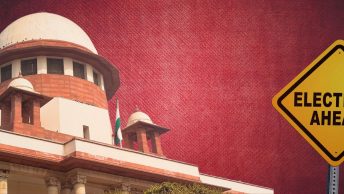In early 2007, two female law students in America were targets of degrading comments on the site “AutoAdmit”, a discussion page meant for law students and lawyers. In her article on internet misogyny, Martha Nussbaum extracts some of these comments and concludes that it is culture ‘rather than law’ that requires change to deal with such conduct. Relying on expert literature on psychology she says “changing [culture] requires not just reigning in some pathological bad apples…change may be produced through more responsible images of masculinity in the media and public culture.” A reason why she may have seen a limited role for law is because such speech is usually protected under the First Amendment of the American Constitution.
Coming to the recent controversy about the “bois’ locker room”, it appears that there may be scope for punishing the participants of the chat group only because of the images that were shared and the age of the targeted girls. If not for these specific facts, one is not sure as to whether the general content of the messages themselves could have led to any action against the participants. Yet the public outrage surrounding the incident flows as much from the casual references to rape as any image shared or age of the women targeted in the group. Section 66A of the IT Act, struck down by the Court in Shreya Singhal v. Union of India for vagueness could have been used to punish the participants just on the basis of the misogyny in their speech.
What is relevant however is the manner in which the court construed restrictions under Art. 19(2) of the Constitution to make Indian free speech a mirror image of its American counterpart. This will render even a provision more specific than Sec. 66A vulnerable to challenge, as long as it penalised speech just on the basis of the morality of its content.
Keeping in line with the general tendency in cases like Chandrakant Kalyandas Kakodkar v. State of Maharashtra, and Chandra Rajkumari Vs. Commissioner of Police; the Court in Shreya Singhal takes morality to mean only sexual morality or the prohibition against obscenity such as the prohibitions under the Indecent Representation of Women Act.
In any event the idea of morality being a constraint on fundamental rights had already fallen out of favour, most significantly in the exposition of the term by the Delhi High Court in Naz Foundation v. GNCTD. The rationale for doing away with the original meaning of morality and substituting it with ‘constitutional morality’ in Justice AP Shah’s words is that “popular morality is based on shifting and subjective notions of right and wrong.”
It is important to note that Justice Shah’s view has been approved and reiterated in Navtej Singh Johar v. Union of India, in Indian Young Lawyers’ Association v. State of Kerala, and indirectly in K.S. Puttaswamy v. Union of India. These judgments assume ‘constitutional morality’ to be a theory of individual rights unfettered by moral considerations by dubbing such considerations as either majoritarian or ‘subjective fetters on rights’.
Justice Krishna Iyer in Raj Kapoor v. State says while determining concepts like morals and aesthetics “jurisprudence meets other social sciences and never goes alone to bark and bite”. Justice Shah didn’t hesitate to look into scientific literature to discount some arguments against homosexuality. But there was no effort in any of this case law to make a determination as to what ‘popular morality’ was to see if it indeed opposed the rights in question. The famous psychoanalyst Sudhir Kakkar says the Indian tradition towards homosexuality has been one of ‘quiet toleration’ right from ancient times. The court on the other hand assumes the veracity of the state’s claim that homosexuality offends public morality in India and ignores any role for public morals in interpreting the law.
The best philosophical justification for this approach can be found in the writings of Ronald Dworkin who is quoted, along with other philosophers, by the court in Puttaswamy I in its exposition of “natural rights”. In response to “a woman who believes that explicit sexual material degrades her”, Dworkin says “only one answer is consistent with ideals of political equality: that no one may be prevented from influencing the shared moral environment through his own private choices, tastes, opinions and examples just because these tastes or opinions disgust those who have the power to shut him up or lock him up”.
Other Western democracies have chosen a different path. The ECHR, while upholding criminal punishment for holocaust denial, in Pastors v. Germany highlighted the peculiar moral considerations prevailing in the relevant countries – “in light of the historical role and experience, states that have experienced the Nazi horrors may be regarded as having a special moral responsibility to distance themselves from the mass atrocities perpetrated by the Nazis.” More importantly, Canada recently amended its Human Rights Act and Criminal Code to allow prosecution of gender-based hate speech. In doing so, it relied on the decision of the Canadian Supreme Court in R v. Keegstra, which specifically differed with the American approach to free speech.
A philosophical challenge to Dworkin’s philosophy and the American Supreme Court’s approach to liberty comes from the Harvard professor Michael Sandel. Referring to the American Supreme Court’s doing away of the two-level theory of speech protection, he says that the erosion of this theory “relieves the court of the task of assigning values to various categories of speech and so signals the rise of neutrality as a principle of First Amendment jurisprudence.” He calls this approach tolerating “speech more by respecting it less”
Shouldn’t the moral outrage prevalent in Indian society in recent years, especially after the Nirbhaya incident, act as a factor influencing restrictions under Article 19(2)? Our Courts’ approach doesn’t allow this.







Nicely written post! I must thank you for posting this blog because the topic is in very demand today and everyone wants to read about it.
[…] https://lawandotherthings.com/2020/06/bois-locker-room-and-the-limits-of-our-constitutional-morality… […]
Thank you very much for sharing, I learned a lot from your article. Very cool. Thanks.